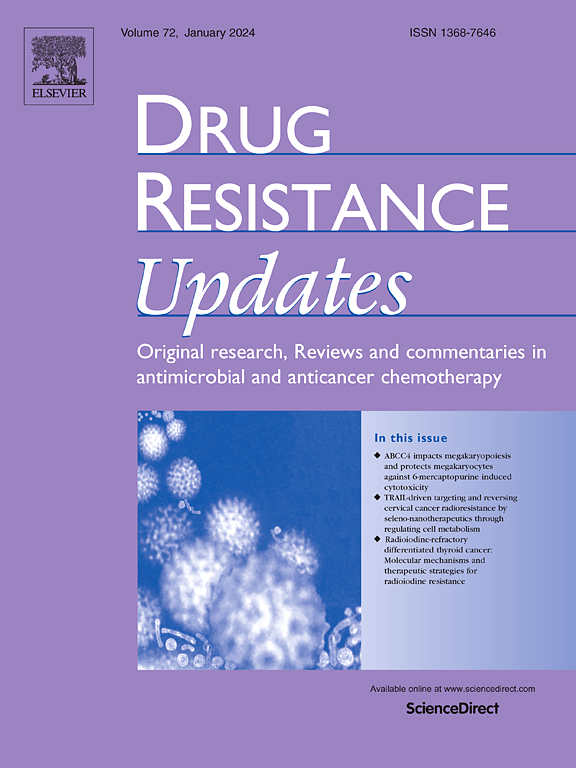Global dissemination of Klebsiella pneumoniae in surface waters: Genomic insights into drug resistance, virulence, and clinical relevance
IF 15.8
1区 医学
Q1 PHARMACOLOGY & PHARMACY
引用次数: 0
Abstract
The aquatic environment is a major pathway for the spread of antibiotic resistance (AR) among microorganisms. Among these, Klebsiella pneumoniae reveals high genome plasticity, adaptability, and the ability to colonize humans, animals, and the natural environment, awarding it a significant role in the spread of AR. This work presents an in-depth analysis of the whole sequences of 149 K. pneumoniae genomes isolated from surface waters available in databases. The sequences were obtained from 20 countries in five continents. The analyses showed a high genomic diversity of isolates, classifying them into 94 unique sequence types. The isolates carried numerous virulence and drug resistance determinants in their genomes, including genes for carbapenem and colistin resistance. The critical resistance genes were located on plasmids, indicating their high mobility and ease of access in water environments. Sublineage 258 members, in particular ST11, have been identified as important carriers of both important drug resistance determinants and key virulence factors, thus posing a substantial threat to human health. Our analysis revealed the direct transmission of drug-resistant and virulent clinical strains to the natural environment, highlighting the role of K. pneumoniae in the dissemination of drug resistance within the "One Health" framework. Surface waters represent an environment conducive to the spread and evolution of drug resistance, and K. pneumoniae plays a significant role in this process by providing clinically-significant antibiotic resistance genes to environmental recipients.
求助全文
约1分钟内获得全文
求助全文
来源期刊

Drug Resistance Updates
医学-药学
CiteScore
26.20
自引率
11.90%
发文量
32
审稿时长
29 days
期刊介绍:
Drug Resistance Updates serves as a platform for publishing original research, commentary, and expert reviews on significant advancements in drug resistance related to infectious diseases and cancer. It encompasses diverse disciplines such as molecular biology, biochemistry, cell biology, pharmacology, microbiology, preclinical therapeutics, oncology, and clinical medicine. The journal addresses both basic research and clinical aspects of drug resistance, providing insights into novel drugs and strategies to overcome resistance. Original research articles are welcomed, and review articles are authored by leaders in the field by invitation.
Articles are written by leaders in the field, in response to an invitation from the Editors, and are peer-reviewed prior to publication. Articles are clear, readable, and up-to-date, suitable for a multidisciplinary readership and include schematic diagrams and other illustrations conveying the major points of the article. The goal is to highlight recent areas of growth and put them in perspective.
*Expert reviews in clinical and basic drug resistance research in oncology and infectious disease
*Describes emerging technologies and therapies, particularly those that overcome drug resistance
*Emphasises common themes in microbial and cancer research
 求助内容:
求助内容: 应助结果提醒方式:
应助结果提醒方式:


